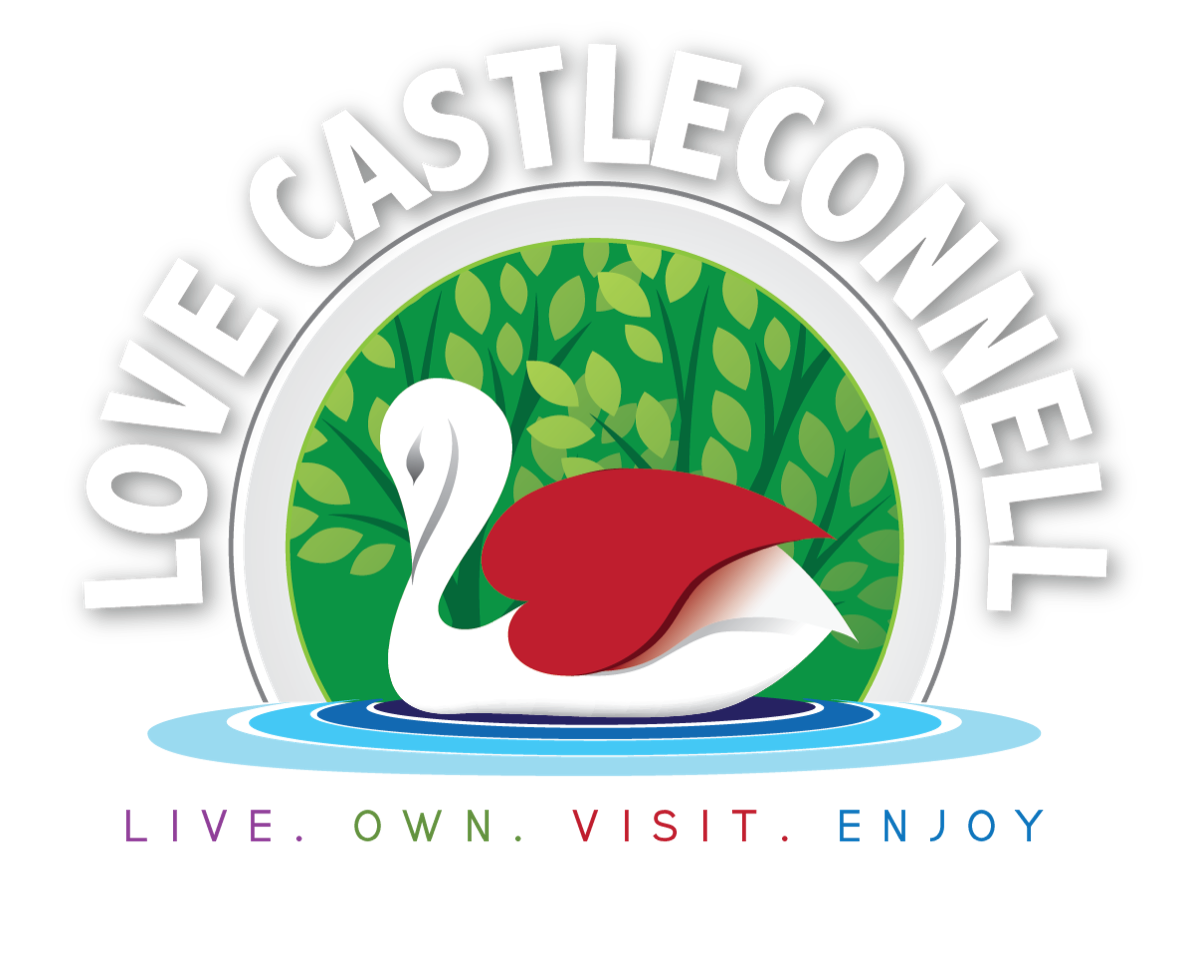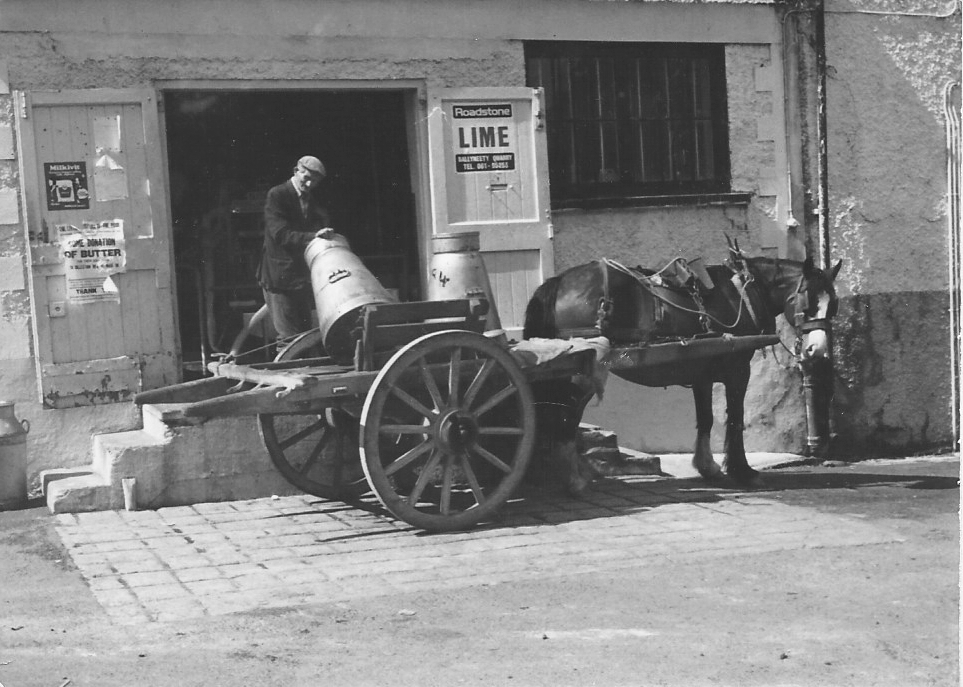By Paddy Tuohy
“The Farmers son to the creamery is gone,
In the ranks of the churns you will find him,
His father’s coat buttoned up to his throat,
And his shirt hanging out behind him.”
A work colleague of mine sang it at get togethers and parties, many years ago when I worked in Kilkenny. It was a parody on the martial air “The Minstrel Boy.” It epitomised the important roles the creameries played in rural parishes from their establishment in the early 1900s until their widespread closure seven or eight decades later.
I attended a very enjoyable if nostalgic night in Birdhill in July. It was to honour the centenary of the building of the Co-Op creamery a hundred years before in 1914. It was a night full of reminisces some happy, some sad, but all showed a great neighbourly sense of cooperation. Returning home that night Michael Murphy said to me that I should write something for An Caisleán as a memory and a tribute to the people of the little enclave of Gouig Upper and Lower who supplied milk to Birdhill Co-Op from its beginning to its closure.
Castleconnell was unique as a rural parish in Co. Limerick in that it had no creamery within its own boundary. There were creameries on the out skirts of its boundaries — Newport, Annacotty, Bridgetown and Birdhill. With the exception of three families namely the Walshes, the Ryan [Phil] and the Caseys who delivered their milk to Annacotty, all the other families delivered their milk to Birdhill Co-Op. They had an allegiance or an affinity with Birdhill since the time that Cleeves Coompany of Limerick {Cleeves of Cleeves toffees} had a milk collecting station at Birdhill. Because the creamery was three miles distant from Gouig, suppliers joined and carried their neighbours milk for a week and then the neighbours in turn carried their milk. Tom [the Yank] O Brien, my father Tom Tuohy, Paddy Power and Paddy Murphy were one unit taking the milk, they had to travel one week out of every four, while further over the lower road Thaedy Mackey joined with Martin Bourke they had to deliver one week in every two. In Upper Gouig Dan Ryan { Malachy}, Danny Ryan {Mick}, Tom Gleeson and Paddy Joyce were another unit who took the milk one week out of every four. Those people worked very hard, very hard indeed producing a wholesome organic product which as the fruit of their labours was carried each day to the creamery. The cream from their milk was used to make Irish Creamery butter which at a later stage laid the foundation for the world famous and renowned Kerry Gold butter.
The cows were brought in from their pastures soon after the crowing of the rooster for morning milking and at dusk the same procedure again. That pattern or system was timeless or ageless the people did it for generations or even centuries. The gad fly or warble was a big problem for cows and other cattle as it made them run through briars and wire to escape the menace of the fly. Jars of Zam Buk and Cheno Uncion was applied to soothe the injured teats. It was “light years” away from what is now foreseen as the future of dairying in Ireland { cows micro chipped, robotic milking parlours, bulk tanks and virtual grazing.}
Usually a week before our turn at the creamery it meant a visit to the forge to get shoes and studs fitted on the horse. It entailed a visit to either Martin Ryan in the village, Paddy Quilty, Carrowkeale, Danny Byrnes of Ahane, Bill O Shea of Ballyhane or Tom Slattery of Bridgetown, where the smell of the burning hoof had an acrid aroma all of its own. The iron tyres of the dray cart wheels had to be tightened “shod“ again, it had to be done by a blacksmith but sometimes if let steeping in a water stream it sufficed.
The Irish year was basically divided into two parts, as the old saying goes O Samhainn go Bealtaine and O Bealtaine go Samhainn {from November to May and from May to November} There were many customs and traditions associated with those dates. May as the beginning of Summer symbolised the coming of good weather and of agricultural gain. People lived from the land and so the custody of crops and yields of milk were of vital importance. There was always a certain risk associated with crops and livestock. It was never a real cast iron surety then, no more than it is today. Produce from agriculture can in many ways be unreliable and so the people were extremely careful to protect their prosperity, and were very reluctant to tweak their nose or cast aspersions on the habits or customs of past generations.
The creamery yard during the intake was a hive of talk, discussion, banter, gossip, news of deaths, sicknesses, and marriages as the suppliers waited for the separated milk to take home for calf and pig rearing. The seasons dictated the topics of conversation. Springtime snippets of chat could be heard. “Did you plough yet? Did the horse you bought in the Bridge take to the furrow? Where did you get the pins for your harrow? Billy I have told you before and I’ll have to tell you again that you sow seeds, oats, wheat, barley, grassseeds but you PLANT SPUDS BILLY, YOU PLANT SPUDS” There was a richness of accent and syllable which was music to the ears of the listener. Summertime the topic was different. How much did Miss Coffey’s hay make at auction? Always talk of hurling dominated, “will Tipp beat Cork next Sunday? will Ring be playing? is he injured?”
The creamery played hurling matches against the Mulcair Rover at the Long house field during the mid-fifties I played in some of those matches they were serious affairs but all hurling in Tipperary is serious. Many, many of those who played in those matches answered the long, long whistle of the Eternal Referee and are now playing in the heavenly fields of God.
The creamery also took A.I. calls on behalf of the suppliers. “When noticed whether A.M or P.M. and what breed required.” Brother Peter from the Franciscan Friary came annually requesting donations of butter, he was always generously rewarded with butter from the management, staff and suppliers. There was a shop or a store attached where groceries and things for the farm could be bought. It was a wonderful social outlet for people in the pre television or mobile phone era and it would be impossible to place a value on the comradery and neighbourliness that developed and grew from those creamery days.
My late brother Jimmy worked in the Birdhill creamery as a boiler/dairyman for many years. He also milked his cows. Going out to the field at cock crow he would sing, he had a good loud singing voice, songs such as Lovely Derry on the Banks of the Foyle, Glenswilley, or Red is the Rose, the cows would hear him singing in the morning and begin to amble in for milking. When his son T.J. was drowned while swimming in the Shannon waters at Newgarden, he still brought in his cows but he sang no more.
Its sad to see creameries closed down round the place
A sign of our times and the modern ways
Its sad to see and how my heart yearns,
O goodbye to the creamery and the rattle of churns”
From the C.D.” I am so glad I got the chance” by Patrick O Sullivan Track” Good bye to the creamery” by Derry Kennedy

